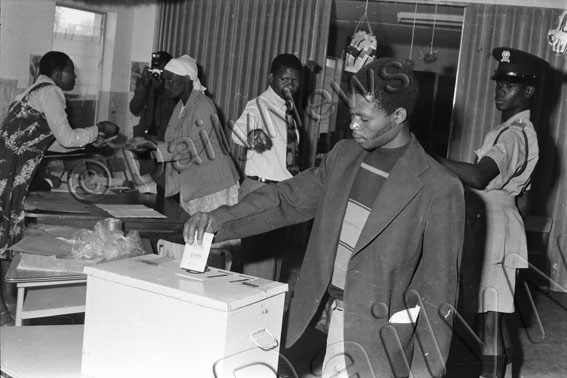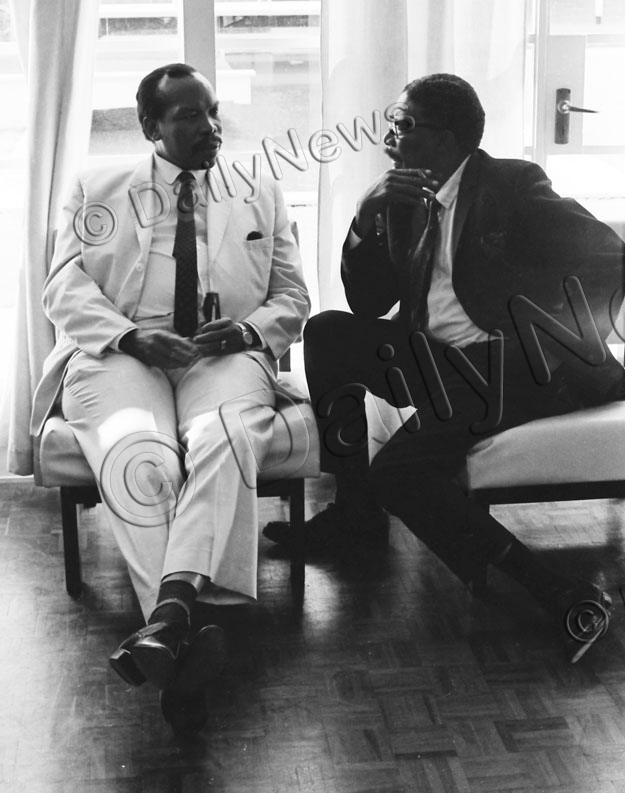Election in Botswana A historical perspective
08 Sep 2019
Since independence Botswana has made substantial progress in institutionalising democracy.
Demonstrative of this is how Batswana continue to strongly believe in the fundamental principle that ‘all political power in state must be derived from the electorate’.
This, among other developments, has been reflected in the number of successful multi-party elections held, which had neatly crafted the country’s democracy and remains the tenet of citizen participation.
Borrowing from the national archives, when the first democratic elections were held in 1965, they were considered to have recorded a resounding success. The first national polls recorded a very high voter turnout (74.6 per cent) throughout the country despite a challenging environment of the time.
The success of such an election could only be indebted to the national aspirations of self-reliance, national unity, prosperity and the cultural heritage of accountability.
In 1965 Botswana Democratic Party (BDP) won 28 seats in an election that preceded independence in 1966. The Botswana People’s Party (BPP), which was formed in 1960, got three seats with a 14.2 per cent vote.
During the 1969 election, results showered another comfortable overall victory for the BDP although its share of the vote was down by 11.8 per cent from its 80.4 per cent high point in 1965.
The ruling party, led by the founding leader and President Seretse Khama lost four of its 28 parliamentary seats. According to the Africa Report of the Cambridge University Press (1969), explicit campaign was set out by two of the contesting parties in their manifestos.
“The BDP produced a 50-pages weighty document, which in their leader Seretse Khama’s words was a ‘national philosophy’. The manifesto was based on four principles of democracy, development, self-reliance and unity. The Botswana National Front (BNF) produced a radical document and promises included compulsory free elementary education, rapid replacement of foreigners by Batswana in the civil service, abolition of permanent individual land tenure, among others,” states the report.
The BNF, which was contesting an election for the first time, won three seats together with the BPP. The Botswana Independence Party (BIP) through their founding leader Mr Motsamai Mpho captured one seat in the far North West (Okavango constituency).
BNF was founded in 1965 with Daniel Kwele as the first president, the leadership later fell to Kgosi Bathoen II. The party held three seats in their first contest at national polls and later leadership went to Dr Kenneth Koma. The BPP was formed in 1960 with Kgalemang Tumediso Motsete fondly known as KTM as its first president while leadership later went to Phillip Matante and Dr Knight Maripe.
There was an interesting aspect to the 1969 polls, especially the role played by tribal affiliations. The BDP lost three seats to the BNF in Bangwaketse territory. A prominent member of the national front was Bathoen Gaseitsewe, Bangwaketse former kgosi who surrendered Bogosi to enter politics. He defeated Quett Masire, vice president of Botswana at the time. Bathoen II became the first traditional leader to contest an election.
As Botswana’s democracy matured there had been some developments that altered the national electoral landscape such as the 2001 national population and housing census.
A decision was made by Parliament to increase the number of popularly elected members from 40 to 57. In 2002 a delimitation commission was appointed by the Judicial Commission to draw boundaries of the newly created constituencies.
There was also pressure from the civil society for a more independent electoral management body. The government instituted a national referendum on the establishment of that institution. On the other hand, the referendum sought a reduction of voting age from 21 to 18 years and also allowing diaspora voting. The result was the establishment of the Independent Electoral Commission (IEC) in 1997.
“IEC was established in 1997 to conduct elections of elected members of the National Assembly, elected members of the Local Government (councillors) and a referendum,” explained Chief public relations officer at IEC Mr Osupile Maroba.
Mr Maroba said after establishing that there were more than 1 590 000 eligible Batswana at the commencement of the general voter registration, the target was set at about 1 270 000 registered voters, which translated into 80 per cent target. At the end of all the voter registration phases, IEC recorded 925 052 voters, which translates to 73 per cent.
“Yes, we are ready and fully prepared to conduct credible election in accordance with the established electoral legal framework of Botswana. We perform a statutory mandate in which we implement the law on the basis of the established statute. We are obligated to live up to the dictate of the legal time frames,” he noted.
Notwithstanding the great achievements major challenges remain.
Mr Maroba decried the ignorance of the electoral legal framework by voters and prospective candidates, which drives negative perception discourse about electoral processes in the public space.
He said this undermined trust of the public on the conduct of the election. He also pointed at the exploitation of the inadequacy of the legal framework by politicians and general apathy among citizens as some of the challenges
Before the establishment of the IEC elections were conducted by the Office of the President under the direction of the Permanent Secretary to the President between 1965 and 1986. Office of the Supervisor of elections was established in 1987 and conducted election between 1987 and 1997.
The IEC was faced with a task of turning the fortunes of Botswana’s democracy around and sustain its credibility in a region fast embracing democracy.
The IEC had also instituted a study to establish factors contributing to widespread voter apathy and rampant disengagement by youth. Since its inception, the institution has made a profound impact on the country’s democracy.
According to the IEC presentation paper to the 2016 Vision conference, in 1999, 2004, 2009 and 2014 voter turnout relatively maintained constant improvement at 77, 76, 76 and 84 per cent respectively.
In 1969, 1974 and 1979 electoral participation was at its lowest with 55, 31 and 58 per cent respectively. 1984 general elections experienced an upsurge with a 78 per cent turnout. The record dropped to 68 per cent in 1989.
There was a substantial gain of 77 per cent in 1994 just before the establishment of the IEC. ENDS
Source : BOPA
Author : Baleseng Batlotleng
Location : GABORONE
Event : analysis
Date : 08 Sep 2019







